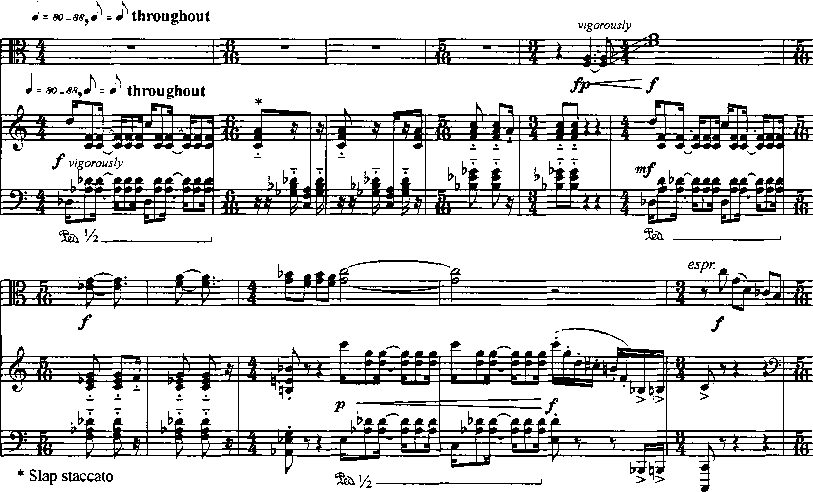137
passagework in the sonata. Although the harmony is similar to the first movement, the
rhythmic energy makes this movement feel completely new.
Example 3.25: Viola Sonata., Third mvt, mm. 1-11

Throughout the movement, the piano reiterates the syncopated rhythm first
presented in the opening measure. Although the viola never has a similar syncopated
figure (except briefly in m. 84), the rhythm is a major structural motive in the movement,
creating its energetic drive, and is similar to one used in the second of Larsen’s Blue
Third Pieces, shown in Example 3.26 and her 2008 Quartets in Example 3.2.
Example 3.26: Blue Third Pieces, Second mvt., mm. 62-65

More intriguing information
1. The name is absent2. The name is absent
3. MANAGEMENT PRACTICES ON VIRGINIA DAIRY FARMS
4. The name is absent
5. Orientation discrimination in WS 2
6. The name is absent
7. MATHEMATICS AS AN EXACT AND PRECISE LANGUAGE OF NATURE
8. Who runs the IFIs?
9. Innovation and business performance - a provisional multi-regional analysis
10. Qualification-Mismatch and Long-Term Unemployment in a Growth-Matching Model